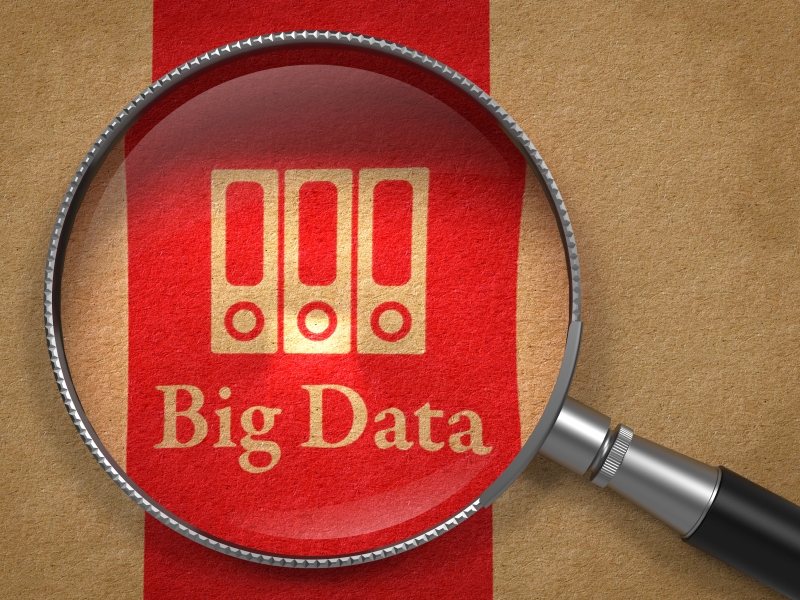
The term Big Data is tossed about so casually that it makes you wonder how many people really understand what it is, let alone the impact it can have on the success of any eCommerce store. While the majority of online stores have some sense of “who” their customers are, probably knowing their basic demographic information like age and gender, for many it is still a guessing game when it comes to understanding the “why,” “what,” “when,” and “how” their customers make a purchase. Even more confusing is trying to take this valuable data and turning it into meaningful insights that increase conversions.
The best place to start understanding your customers is to put yourself into every step of the buying cycle. This will help you to understand who is visiting and buying from your store, what marketing campaigns worked in the past and what didn’t, when your customers are visiting your site and buying, and how to take an automated data-driven approach to your store’s marketing in the most personalized and efficient way possible…just in time for the biggest shopping time of the year.
Who, What, When, How of Ecommerce Holiday Marketing
1. Who Are You Marketing To?
You might know your store’s overall demographic data but can you identify your store’s holiday shoppers? For example, do you know how many women compared to men shop exclusively during the holiday season? Do you know how many first time shoppers you have during the holiday season? Do you know who is shopping your site last minute? Or who is abandoning products in their cart? Remember, during the holidays you might be selling to a different type of customer and they might want something very different from you. Understanding who your customers are during the holiday season is key to increasing conversions because this will allow you to take a personalized approach to your holiday marketing strategy.
2. What Worked and What Fell Short?
How will did your store perform during last year’s holiday season? Did your total revenue increase from the year before? What was your highest converting product? What about your revenue attribution by channel? Before you officially launch your 2014 holiday campaign, you should understand what was successful and what marketing channels (and specific campaigns) attributed to that success. And think big. This isn’t just about what item sold the most. Get deeper and think about repeat order purchase, average order value, customer lifetime value, how many new customers acquired, and your overall ROI.
3. When Do You Start Marketing?
Yesterday. All kidding aside, when it comes to generating holiday sales, timing is everything. The truth is, you can have the best marketing plan in place but if you do not launch it at the appropriate time, it won’t matter. The best advice is to start planning today by creating a calendar of key dates, and then create a plan around those key dates to determine what needs to happen and when it needs to happen. And don’t discount the importance of post-holiday marketing. A lot of people are still in buying mode the week prior to New Year’s – with many cashing in on gift certificates, exchanging things, or looking to spend cash they were given for the holidays.
4. How to Successfully Market to Your Customers?
There are hundreds of thousands of eCommerce stores in the United States. With all the competition out there, how can your store stand out against the increasing competition, especially during the holiday season? This is what eCommerce marketers struggle with every day: how to create a marketing campaign that drives site traffic and conversions. The reality is that marketing to your customers can be confusing because identifying who your customers are, and what and when they buy, only gets you partially there. You must figure out how to relate to your target customer on a case by case basis, and doing this is a lot easier than it might seem.
- Start by Embracing Big Data. The biggest challenge for most eCommerce stores, especially the smaller ones, is to collect, store, and organize all the data that is available. There’s certainly a lot of data waiting to be analyzed and making sense of it all is an overwhelming task for just about every online merchant. Most small and medium online merchants think that Big Data analysis is only for larger companies, like the Amazons and Targets of the world. In fact, having access to data is very important for everyone else, especially as they attempt to compete with the larger stores during the holiday season. Need proof? One of Springbot’s customers that sells apparel and accessories online increased their site traffic by 912% after leveraging their data to create more tactical results-driven marketing campaigns. Another Springbot customer was able to increase their online sales by 3x within a six month period after using their store data to create personalized and automated emails. Bottom line? Embrace Big Data so you can successfully market to your customers.
- Then Remember Personalization is Key. Personalization, done correctly, can help merchants increase conversion rates significantly. The reason it works is that Big Data allows eCommerce stores the ability to offer their customers a personalized experience, including what content to publish and who to send promotions to, by tracking their data in real-time.
- Don’t Forget About Utilizing Predictive Analytics. How can you utilize predictive analytics? Easy. Let’s start by explaining what it is. Predictive analytics uses many techniques from data mining, statistics, modeling, and machine learning to analyze current data to make predictions about the future. Springbot’s eCommerce marketing platform combines Big Data, predictive analytics, channel integration and marketing mix optimization to automatically recommend what marketing actions you can take to help you market smarter.
The Final Word
The dynamics of the eCommerce industry is changing because of the impact of Big Data. While using Big Data to market your online store is never easy, it is really the only way online merchants can compete in this highly competitive industry, especially during the holidays. Identifying who your customers are, and understanding what and when they are buying is the only way to truly know how you can market smarter to them. If you are in the dark about your store’s data or want to know how you can leverage your data to create personalized marketing campaigns, schedule a short demo with our team of eCommerce marketing experts. You can also check out FreeDemographicSnapshot.com to get a sample report of your store’s demographic data. It’s really easy to use and gives you a powerful ‘snapshot’ that includes information about the age, gender, and households of your customers for free.




